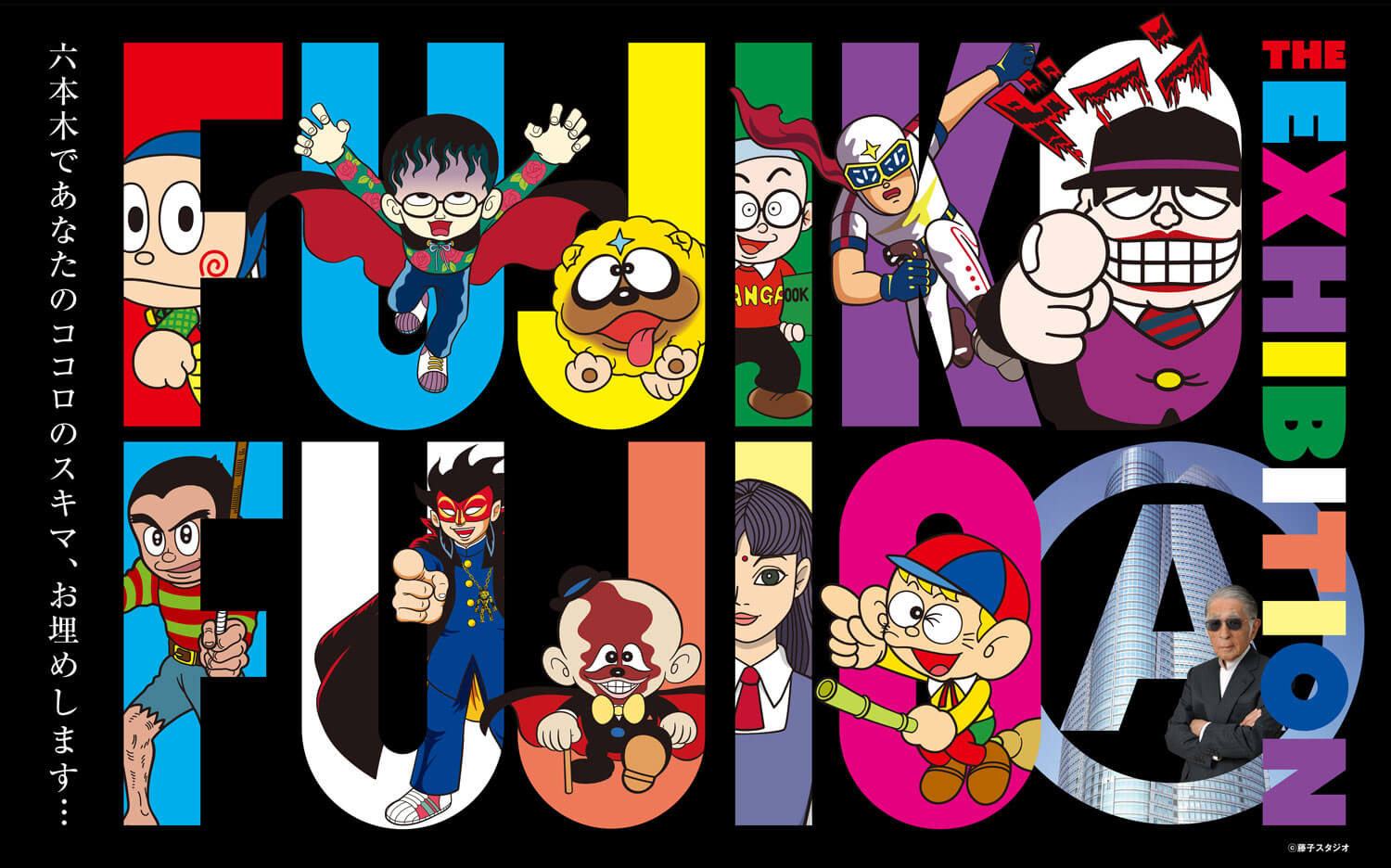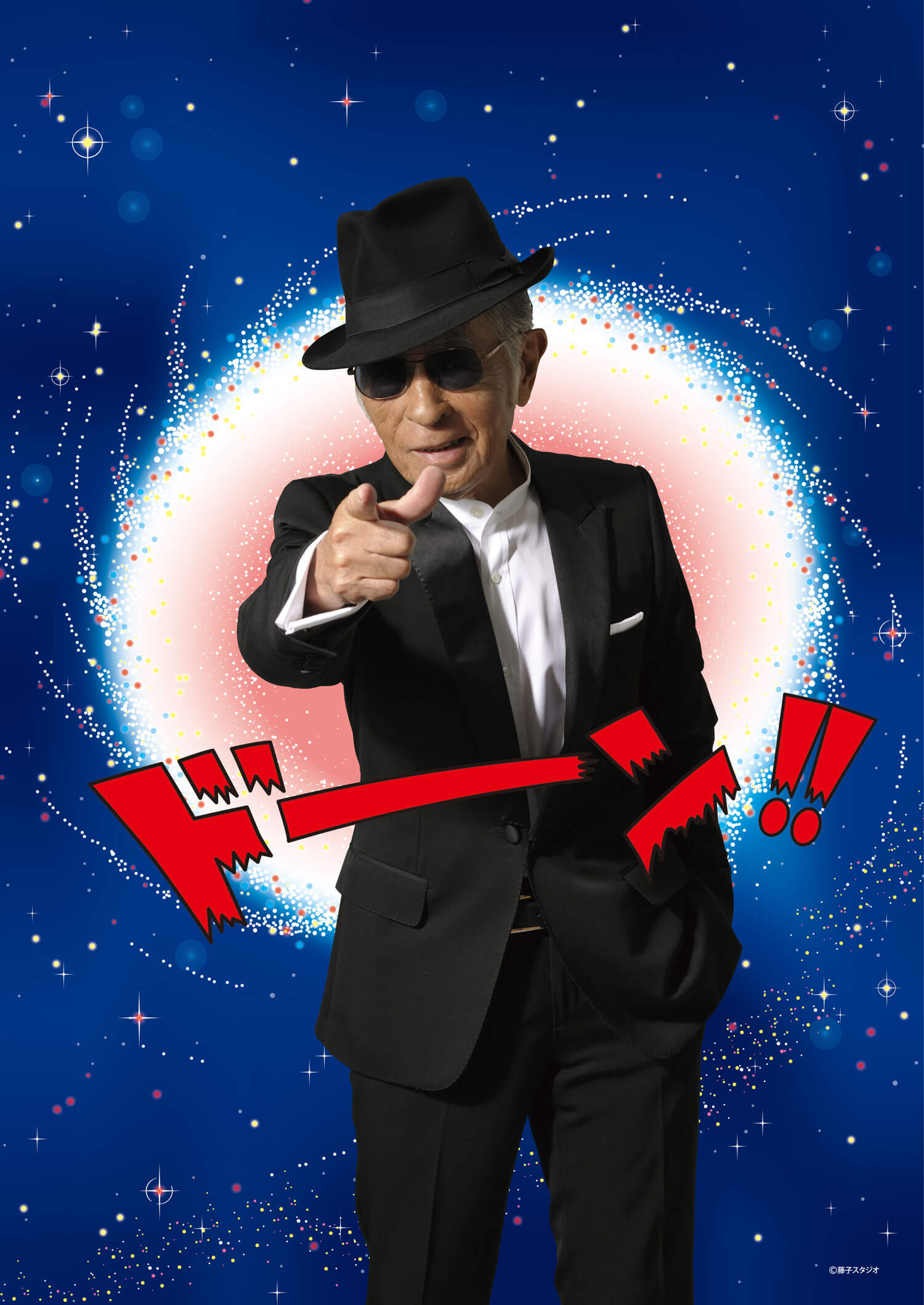Fujiko Fujio A, a Retrospective
In late 2018, the Roppongi Hills observatory held an exhibition honouring the legendary mangaka and one of the fathers of Doraemon.

© Fujiko Studio
Motoo Abiko (known under his artist’s pseudonym Fujiko Fujio A) is a living legend of manga in Japan. In 2018, an exhibition entitled FUJIKO FUJIO Ⓐ THE EXHIBITION – Ⓐ’s Weird and Amazing Collection was held at the Roppongi Hills observatory in Tokyo (Tokyo City View, located on the 51st floor of Mori Tower).
It honoured the mangaka, born in 1934, and the location was transformed into a ‘fun photo spot’ for the occasion.
A master of dark humour
Throughout his career, Motoo Abiko worked with another mangaka, Hiroshi Fujimoto. Both originally from Takaoka, a coastal city in Toyama prefecture, they created their collaborative works under the pseudonym Fujiko Fujio. The duo were behind one of the most iconic characters in manga and anime: Doraemon, a robot-cat that travels from the future to help a young boy, Nobita.
The pair separated in 1987 and Hiroshi Fujimoto steered his career towards manga for children, while Motoo Abiko preferred to pursue dark humour. It was from this point on that Hiroshi Fujimoto took the pseudonym Fujiko Fujio F., and Motoo Abiko took that of Fujiko Fujio A.
FUJIKO FUJIO Ⓐ THE EXHIBITION – Ⓐ’s Weird and Amazing Collection – (2018), an exhibition at Tokyo City View that took place from 19 October 2018 to 6 January 2019.

©Fujiko Studio
FUJIKO FUJIOⒶ THE EXHIBITION -Ⓐ’s Weird and Amazing Collection-
Period: 19 October 2018 to 6 January 6
Venue: Roppongi Hills observatory, Tokyo
Address: 6 Chome-10-1 Roppongi, Minato-ku, Tōkyō-to
Tel: 03-6406-6652
Opening hours: 10:00-22:00
Admission: General 1800JPY, Students 1200JPY, Children 600JPY, Senior 1500JPY
tcv-fujiko-a-ten.roppongihills.comTRENDING
-
The Tattoos that Marked the Criminals of the Edo Period
Traditional tattoos were strong signifiers; murderers had head tattoos, while theft might result in an arm tattoo.

-
Chiharu Shiota, Red Threads of the Soul
Last year, more than 660,000 people visited the retrospective 'Chiharu Shiota: The Soul Trembles' exhibit at the Mori Art Museum.

-
‘Before Doubting Others, Doubt Yourself. Who Can Truly Say a Dish Isn’t What It Used to Be?’
In ‘A Non-Conformist’s Guide to Surviving Society’, author Satoshi Ogawa shares his strategies for navigating everyday life.

-
The Story of Sada Yacco, the Geisha who Bewitched Europe
Described by Dazed magazine as the first beauty influencer, she has been restored to her former glory since 2019.

-
Ito Jakuchu's Naturalist Paintings
From 15 September until 14 October 2018, the Petit Palais showcased the artist's iconic ‘Images of the Colourful Realm of Living Beings’.





